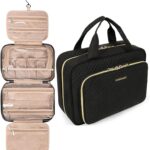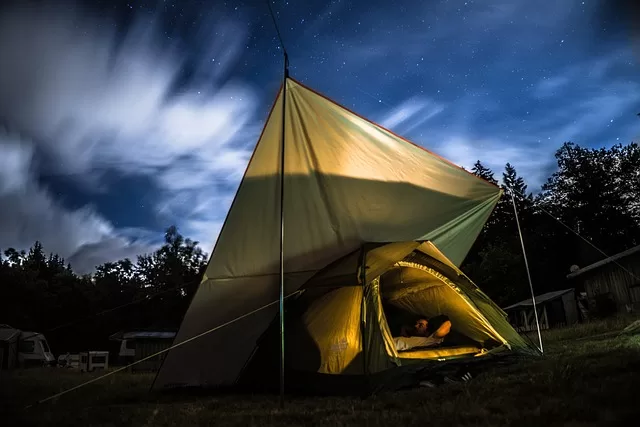One of the most thrilling things to do while camping is hiking and I guess you are ready to hit the trails and enjoy the great outdoors while on it, but possibly wondering how to choose the right hiking boots for your next adventure. When you choose the right hiking boots, you are a whole long way away from experiencing a painful or uncomfortable hiking experience and a lot closer to having the perfect moment hiking trails and enjoying all the fun things to explore in the great outdoors.
Needless to point out that your feet are the foundation of your body, and the right hiking boots will save you from injuries, blisters, and soreness. However, I am aware that with so many appealing options and brands, it can be quite hard to know how to choose the right hiking boots for your camping trip and other outdoor adventures.
On that note, this comprehensive guide on how to choose the right hiking boots for your next adventure is here to serve as a pointer. It provides tips for making the right choice like factors to consider when making a choice, the best brands to go for, and how to care for and maintain your hiking boots.
Factors to Consider When Choosing Hiking Boots

With so many different factors to consider, selecting the perfect pair of boots can be overwhelming. However, understanding the importance of each factor and how they affect your overall comfort and performance on the trail is key to finding the ideal hiking boots for your next adventure. From the type of hiking, you’ll be doing to the terrain you’ll be covering, and the shape of your feet, here are the essential factors to consider when choosing hiking boots.
Type of Hiking
The type of hiking you’ll be doing will determine the level of support, durability, and protection you’ll need from your boots. If you’re planning on doing day hikes on well-maintained trails, trail shoes or hiking shoes might be a good option. For more rugged terrain and longer hikes, hiking boots with ankle support and more durable construction are recommended. For mountaineering or backpacking trips, you’ll need mountaineering boots with added insulation and support.
Terrain
The terrain you’ll be hiking on is an essential factor to consider when choosing hiking boots. For flat and easy trails, trail shoes or hiking shoes with a flexible sole and minimal support might be enough. If you’ll be hiking on rocky or uneven terrain, boots with stiffer soles and ankle support will provide more stability and prevent injuries. For snowy or icy terrain, boots with added insulation and traction are necessary.
Foot shape and Size
The shape and size of your feet are unique and will affect the fit and comfort of your hiking boots. Make sure to measure your feet and consider any potential foot problems or conditions before selecting a pair of boots. Choose a size that allows for some wiggle room in the toes and prevents your feet from sliding around inside the boots. Boots that fit snugly around the ankle and heel provide more stability and prevent blisters.
Support and Cushioning
The level of support and cushioning you’ll need depends on the type of hiking and the terrain you’ll be covering. Hiking boots with added cushioning provide more comfort on longer hikes and uneven terrain. Ankle support is crucial to prevent injuries, especially on rocky or steep terrain. Look for boots with a sturdy midsole and outsole that provide shock absorption and stability.
Read also The Most Useful Tips for Camping During the Winter
Material and Construction
The material and construction of your hiking boots affect their durability, breathability, and water resistance. Leather boots are durable and provide excellent protection but can be heavy and less breathable. Synthetic materials are lighter and more breathable but may not be as durable. Look for boots with a waterproof or water-resistant membrane to keep your feet dry in wet conditions.
Weight
The weight of your hiking boots can impact your overall comfort and performance. Lighter boots are more comfortable and allow for more flexibility and agility on the trail. Heavier boots with more support and protection are necessary for more rugged terrain and longer hikes. Consider your personal preference and the demands of your hiking trip when choosing the weight of your boots.
Types of Hiking Boots
The type of hiking boots you choose will depend on the kind of terrain you’ll be tackling, the level of support and protection you need, and your personal preferences. With so many types of hiking boots available, it can be overwhelming to choose the right pair. From lightweight trail shoes to heavy-duty mountaineering boots, there are different types of hiking boots and you need to determine which type of footwear is best for your next adventure.
Trail Shoes
Trail shoes are designed for light hiking on well-maintained trails. They are low-cut and lightweight, making them ideal for day hikes and running. They have a flexible sole and minimal support, making them comfortable and easy to move in. Trail shoes are breathable and provide good traction on dry surfaces but are not recommended for rugged terrain or wet conditions.
Hiking Shoes
Hiking shoes are slightly more robust than trail shoes but still offer a lightweight and flexible option. They have a mid-cut and provide more ankle support and protection than trail shoes. Hiking shoes are designed for hiking on moderately challenging terrain, providing a good balance of comfort and support. They are breathable and provide good traction on various surfaces but are not as durable or protective as hiking boots.
Hiking Boots
Hiking boots are the most traditional and robust type of hiking footwear. They have a high cut and provide excellent ankle support and protection, making them ideal for hiking on rough terrain. Hiking boots have a sturdy construction, cushioning, and support, making them comfortable for longer hikes. They are water-resistant and provide excellent traction on different terrains, but they can be heavy and less breathable than hiking shoes.
Mountaineering Boots
Mountaineering boots are the most robust and heavy-duty type of hiking footwear, designed for use in challenging alpine environments. They have a high cut and are made with insulated and waterproof materials to keep feet warm and dry in extreme conditions. Mountaineering boots have a stiff soles, providing excellent support and stability on uneven terrain and snow. They are designed to accommodate crampons for use on glaciers and steep snowfields. Mountaineering boots are not recommended for regular hiking but are necessary for technical mountaineering and ice climbing.
Also read Top 10 Camping Gear and Equipment for Every Outdoor Adventure
Tips for Trying on Hiking Boots
Knowing how to choose the right hiking boots for your next outdoor adventure means taking the time to properly try on hiking boots to ensure a comfortable and enjoyable hiking experience before buying or taking them along with you for your outdoor adventure. Here are some tips to ensure that you find the perfect pair of boots for your next outdoor adventure.
Bring Appropriate Socks
It’s important to wear the same type of socks you plan to wear on your hiking trip when trying on boots. Choose socks made from moisture-wicking materials that will keep your feet dry and comfortable on the trail.
Try On Boots at the End of the Day
Feet tend to swell during the day, so it’s best to try on boots in the late afternoon or evening when your feet are at their largest. This will help ensure that your boots fit comfortably throughout your hike.
Walk Around in the Boots
When trying on boots, walk around the store for at least 10-15 minutes to get a feel for the boots. This will help you determine if the boots provide the right level of support and comfort for your feet.
Check for Proper Fit
Ensure that there is enough space in the toe box to wiggle your toes without feeling cramped. Make sure the heel of the boot is snug and does not lift when walking. Check that the boot fits snugly around the arch and instep of your foot.
Check for Pressure Points and Chafing
While walking around in the boots, check for any areas of discomfort, pressure points, or chafing. Make sure the boots do not rub or pinch your feet in any way. Consider trying on boots with different lacing systems or adjusting the laces to find the perfect fit.
Maintenance and Care for Hiking Boots
Taking care of your boots just like other camping gear and equipment not only protects your investment but also ensures you have the right equipment to keep you safe and comfortable on the trail. Here are some tips for maintaining your hiking boots for your next outdoor adventure and many more. By following these tips for maintenance and care, you can extend the life of your hiking boots and ensure they provide the necessary support and protection for many outdoor adventures to come.
Cleaning
After a hiking trip, it’s important to clean your boots to remove dirt, debris, and sweat. Use a soft-bristled brush or cloth to gently remove any dirt or debris from the boots. Use a mild soap or specialized boot cleaner to remove any stains or buildup. Avoid using harsh chemicals or detergents that can damage the boots.
Drying
Proper drying is crucial to prevent damage to your boots and prevent the growth of bacteria and mold. Remove the laces and any inserts, and stuff the boots with newspaper or a towel to help them retain their shape and absorb moisture. Avoid drying boots in direct sunlight or near a heat source, as this can damage the materials.
Conditioning
Conditioning helps to keep the leather supple and prevents it from cracking over time. Apply a leather conditioner after cleaning and drying the boots, following the manufacturer’s instructions. This will help to maintain the waterproofing and durability of the boots.
Storage
Proper storage is essential to prevent damage and maintain the shape of the boots. Store your boots in a cool, dry place away from direct sunlight or heat sources. Avoid storing boots in a compressed position that can damage the materials and shape of the boots. Consider stuffing your boots with newspaper or a towel to help them retain their shape during storage.
The Top Hiking Boots Brands to Choose From
There are many great hiking boot brands on the market, each with its own unique features and benefits. Choosing the right hiking boots from here will depend on your personal preference and needs. Here are some of the top brands that are known for making high-quality hiking boots.
Salomon Salomon
Salomon Salomon is a French brand that produces a wide range of outdoor gear, including hiking boots. Their boots are known for their durability, support, and comfortable fit.
Merrell
Merrell is an American brand that specializes in hiking and outdoor footwear. Their hiking boots are designed for comfort, support, and traction, and are available in a variety of styles for different types of hikes.
Vasque
Vasque is a brand that has been around for over 50 years, and they are known for making rugged and durable hiking boots. Their boots are designed to provide excellent support and traction on a variety of terrains.
Lowa
Lowa is a German brand that produces high-quality hiking boots that are designed to last for years. Their boots are known for their comfort, support, and durability.
La Sportiva
La Sportiva is an Italian brand that produces hiking boots that are designed for serious hikers and mountaineers. Their boots are known for their technical features, including waterproofing, insulation, and excellent grip.
Other honorable mentions include Danner, Scarpa, Keen, and Oboz. Ultimately, the best hiking boot brand for you will depend on your specific needs and preferences, so it’s important to try on a variety of boots and find the ones that feel the most comfortable and supportive for your feet.
Conclusion
Choosing the right hiking boots is essential for a safe and enjoyable outdoor adventure. The type of hiking boots you choose will depend on the type of terrain you plan to tackle, the level of support and protection you need, and your personal preferences and eve season you are camping in. By considering factors such as the type of hiking, terrain, foot shape, and size, support, and cushioning, material and construction, and weight, you can narrow down your options and find the perfect pair of boots for your next adventure.
Check out these Creative Camping Gear Repair and Maintenance Hacks
Remember to also follow the tips for trying on boots and proper maintenance and care to ensure your boots last for many hikes to come. With the right hiking boots on your feet, you can confidently conquer any trail and experience the beauty of the great outdoors. So, lace up and hit the trail – your next adventure awaits!



























